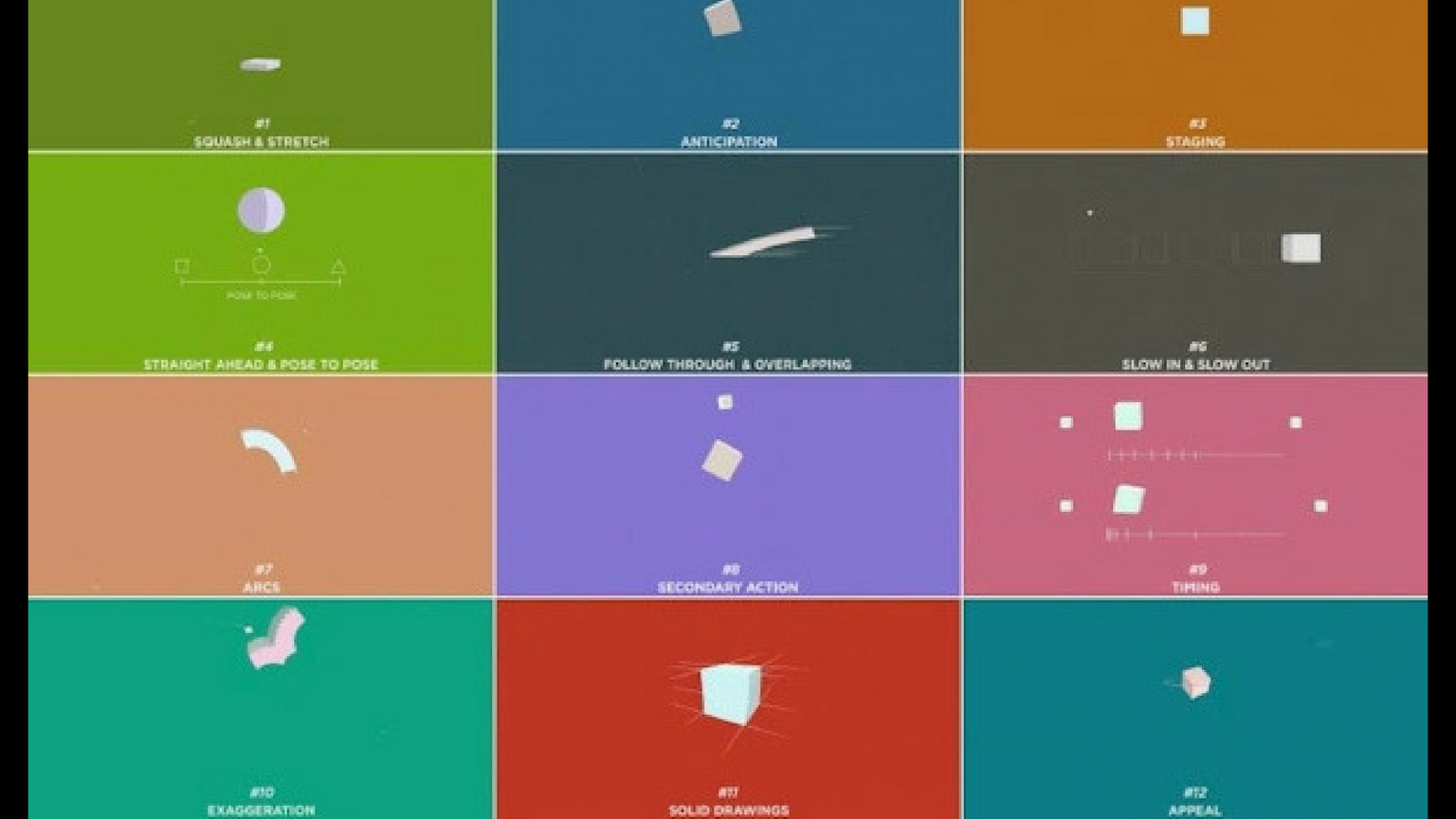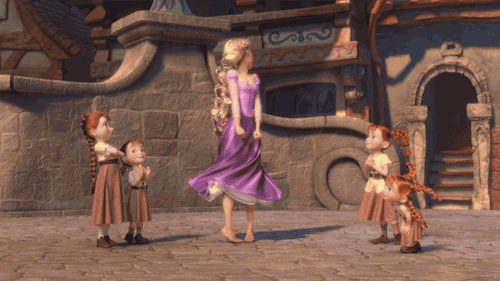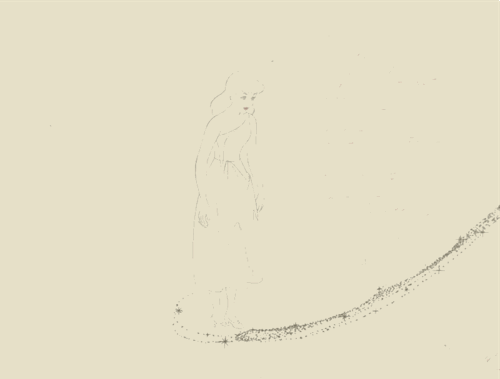Within the field of animation there are many rules and techniques that need to be considered and used within an animation. These fundamentals are important, almost essential, to making a successful piece of animation. There are 12 basic principles in animation that are usually used as a basis and starting point for creating an interesting piece of work. These principles were consolidated by some animators from Disney and are widely recognised as vital to creating animations and are something everyone must learn. These principles are usually used in 2D animation but can sometimes be seen within 3D animation also. They are also used in traditional and modern animation techniques to help with the animation process and making an effective outcome.
Ritchie. J (2017) The 12 Principles of Animation (With Examples). Available online: https://idearocketanimation.com/13721-12-principles-of-animation-gifs/ [Accessed 6/5/20].
The principles are as follows in this image:
Within my work on the first part of this module I used many of these principles myself to complete the tasks that were set. I found that many of the principles were easy to add into an animation and usually came naturally to add into an idea as a lot of them seem logical to add to an animation to make it effective. I added in things like squash & stretch and slow in & slow out to add fluid movement and smoothness to the animations I was creating. My use of squash & stretch was prevalent when I was creating an animation of a bouncing ball, to make a convincing motion I implemented this principle to make the ball look like it was impacting the ground and a reaction of the ball was caused by the action I was animating. A lot of the principles are things that really take an animation to the next level and make it visually appealing, these are things such as follow through and arcs (both of which I think are important for making something for the eye to follow and that is interesting to watch).
Within the Disney movie, Tangled, many examples of these principles can be seen. One that is most often used is the principle of Follow Through. It can be seen clearly in the GIF below when she is twirling to show off her new hairstyle. Animation techniques like this bring more realism to an animation and help the scene flow. You can see below that her skirt and hair continue to move and twirl after her body stops moving, this is the follow through of the action and really adds to the scene, giving it life.
Below is another example of one of the principles, this one is the straight ahead principle. This is also an example of a technique in action in traditional animation. The straight ahead principle involves drawing every frame as you go to create the animation, this allows the animator to make the scene flow exactly how they want to. It helps to make an animation look more fluid and realistic and is used really effectively in the scene below of Cinderella changing into a princess gown. In contrast if Pose to Pose was used the animation would not have looked as smooth as Pose to Pose involves drawing almost a start and end point for each action of a character and then filling in some animations in between, this means that the action can’t be as carefully crafted as it can with the Straight Ahead technique.



